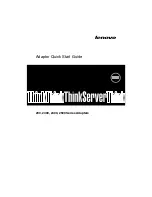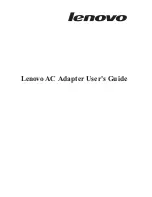
Getting Started
CAN USB-232 User Manual
2-25
2.7.1 Message String Syntax
Message strings are formatted as human-readable ASCII sequences that are easy to enter and read. Each
message string is of variable length, depending on the identifier value and the number of data bytes included
in the message.
Messages starting with ‘|’ will generate a self-receive of the transmitted message. If the message passes
filtering, it will be received as if it had been sent from some other node. Terminating with ‘!’ instead of ‘;’
issues a on-shot transmit. Ie. No attempts to automatically retry on error will happen. This is used in time-
triggered CAN protocols.
Terminating with ‘!’ instead of ‘;’ issues a on-shot transmit. No attempts to automatically retry on error will
happen. This is used in time-triggered CAN protocols.
All message string characters are in upper case only. Lower case characters will be interpreted as a syntax
error and the message will be discarded.
Identifier and data fields are treated as base-16 digits (hexadecimal).
The length field is treated as a base-10 digit and must be a single digit between 0 and 8.
The syntax of both transmit and receive message strings are identical.
There are two types of message strings:
- Normal CAN messages
- Request-To-Transmit CAN messages (RTR)
As per the CAN 2.0A/B specification, RTR messages do not contain data. To support RTR messages, the
syntax is modified to include an explicit single-digit length.
2.7.2 Normal CAN Message
A normal CAN message consists of the type (11-bit or 29-bit), identifier, length, and data bytes and is
encoded as follows:
Normal CAN Message Syntax
: <S | X> <IDENTIFIER> <N> <DATA-0> <DATA-1> … <DATA-7> ;
The first character,‘:’, is for synchronization and allows the CAN USB-232 parser to detect the beginning of
a command string.
The following character is either ‘S’ for standard 11-bit, or ‘X’ for extended 29-bit identifier type.
The ‘IDENTIFIER’ field consists of from one to eight hexadecimal digits, indicating the value of the
identifier. Note that if a 29-bit value is entered and an 11-bit value was specified, the command will be
treated as invalid and ignored.
The character ‘N’ indicates that the message is a normal (non-RTR) transmission.
Each ‘DATA-n’ field is a pair of hexadecimal digits defining the data byte to be sent. If no data is to be sent
(length = zero), then the data bytes are omitted.
Each data byte specified must be a hexadecimal pair in order to eliminate ambiguity.
The terminating character ‘;’ signals the end of the message.
Summary of Contents for CAN USB-232
Page 1: ...CAN USB 232 User Manual Revision E August 1 2016 ...
Page 2: ......
Page 36: ...Troubleshooting 2 28 CAN USB 232 User Manual ...
Page 41: ...Getting Started CAN USB 232 User Manual 2 33 2 8 4 Get CAN Virtual Circuit Setting ...
Page 42: ...Troubleshooting 2 34 CAN USB 232 User Manual 2 8 5 Set CAN Virtual Circuit TX ID ...
Page 43: ...Getting Started CAN USB 232 User Manual 2 35 2 8 6 Set CAN Virtual Circuit RX ID ...
Page 44: ...Troubleshooting 2 36 CAN USB 232 User Manual 2 8 7 Set CAN Virtual Circuit Forced Send Code ...
Page 45: ...Getting Started CAN USB 232 User Manual 2 37 2 8 8 Set CAN Virtual Circuit Forced Wake Code ...
Page 46: ...Troubleshooting 2 38 CAN USB 232 User Manual 2 8 9 Set CAN Virtual Circuit Timeout Send ...
Page 47: ...Getting Started CAN USB 232 User Manual 2 39 2 8 10 Set CAN Virtual Circuit Wake Timeout ...
Page 48: ...Troubleshooting 2 40 CAN USB 232 User Manual 2 8 11 Set CAN Virtual Circuit Wait after Wakeup ...
Page 65: ...CAN USB 232 User Manual 2 1 ...
















































